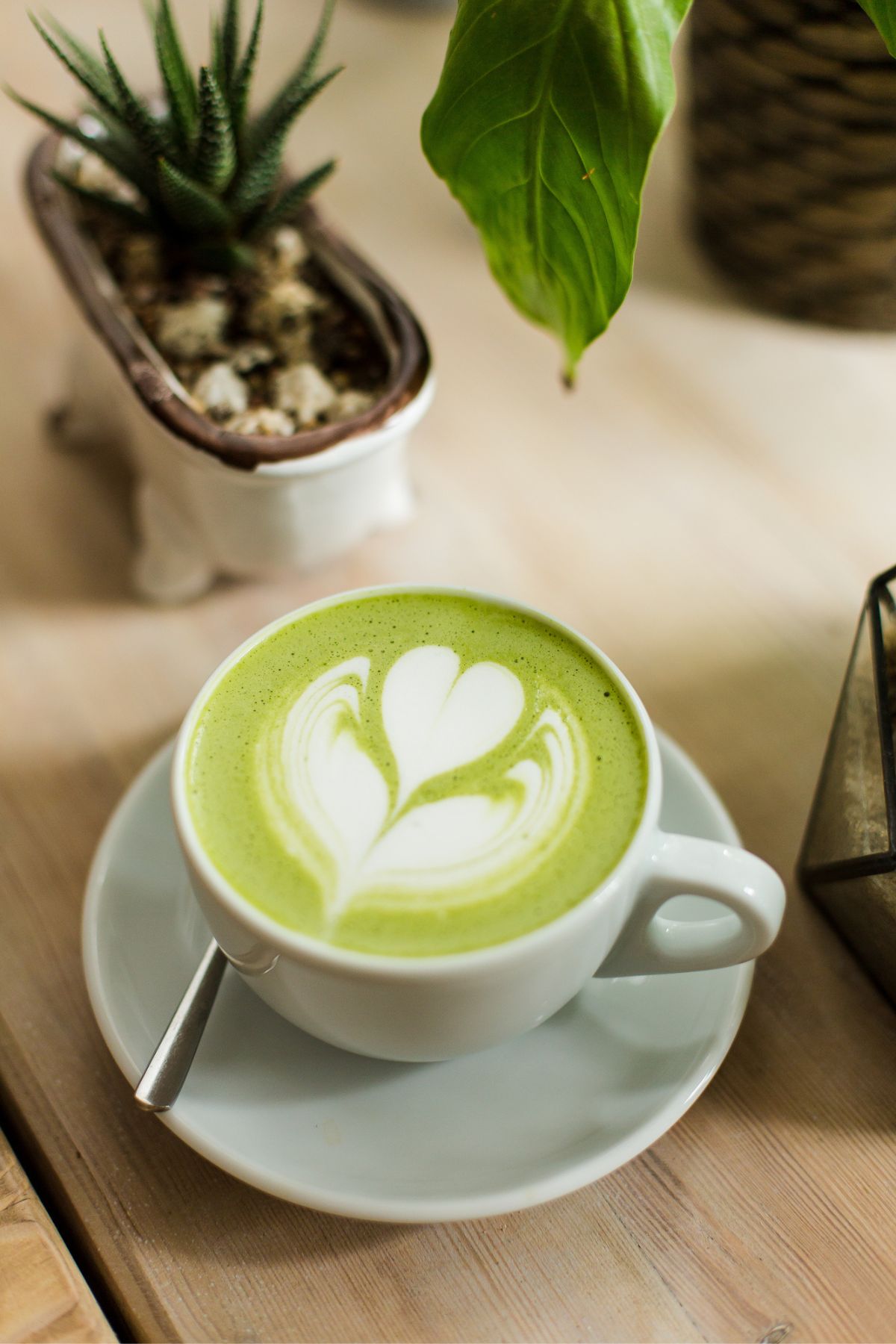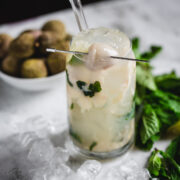Make room for a fresh contender in the morning energy boost race: Matcha Tea. Explore the appeal of this beverage, learn where to purchase it, and find out how to prepare it as a hot or iced drink.

Originating from Japan, matcha tea is a finely milled green tea that's becoming a global favorite for its rich flavor and moderate caffeine content, along with a substantial helping of health-promoting nutrients.
Enjoy your matcha hot or cold alongside your favorite sweet or savory snacks like Mochiko Chicken or Black Sesame Cookies.
Uncover the various techniques for crafting Matcha tea and learn the steps to create an impeccable cup consistently.
What Is Matcha Tea?

Matcha tea is a finely ground powder made from specially grown and processed green tea leaves, traditionally consumed in Japan. The leaves are shaded from the sun for the last few weeks before harvest to increase chlorophyll levels and create a vibrant green hue.
After harvesting, the leaves are steamed, dried, and ground into a fine powder. This is what makes matcha so unique - the process it goes through before reaching our cup is quite lengthy.
Matcha is known for its rich, umami flavor and is used in both traditional tea ceremonies and modern culinary practices, offering health benefits due to its high concentration of antioxidants, vitamins, and minerals.
Why You’ll Love This Energizing Drink

There are many of reasons to appreciate matcha and make it a part of your routine. Here are a few:
- Calming qualities: Matcha contains L-theanine, an amino acid that promotes relaxation and well-being by altering the effects of caffeine, leading to a calm alertness.
- Boosts metabolism: Regular consumption of matcha has been linked to an increased metabolic rate, which can aid in weight loss by enhancing the body's ability to burn fat.
- Rich in vitamins and minerals: Matcha is a good source of Vitamin C, selenium, chromium, zinc, and magnesium.
- It’s good for your skin: The antioxidants in matcha can help protect your skin from damage caused by free radicals, which can lead to wrinkles and other signs of aging.
- Supports heart health: The catechins in matcha may help maintain healthy arteries and reduce the risk of heart-related issues by lowering bad cholesterol and triglyceride levels.
- Detoxifying: Since matcha is high in chlorophyll, it's believed to help detoxify the body and cleanse it of harmful elements.
- Tradition and mindfulness: At a time when meditation retreats are big bucks, the simple traditional Japanese tea ceremony centered around matcha is a practice of mindfulness and respect, offering a spiritual experience that costs pennies.
How to Choose the Right Matcha Grade?

To ensure you're getting the best matcha, aim for a powder that exhibits a deep, vibrant green color, indicating the freshness and quality of the leaves. Since matcha's flavor and health benefits degrade over time, verify the packaging for a recent harvest or production date.
Matcha is categorized into different grades, primarily based on quality, which affects its use in drinking or culinary applications. The two most common grades are ceremonial grade and culinary grade, which includes a subcategory often explicitly used for baking.
Ceremonial Grade Matcha:

Ceremonial grade matcha is the highest quality available and is intended for traditional drinking. It is made from the youngest, most tender tea leaves, which are stone-ground into a fine powder.
This grade of matcha is characterized by a fine texture, vibrant green color, and a delicate, sweet flavor with minimal bitterness. It is typically whisked with hot water and consumed without any added ingredients to fully appreciate its subtle taste and aroma.
Ceremonial grade matcha is ideal for those looking to experience matcha in its most traditional form, such as in a Japanese tea ceremony.
Culinary Grade Matcha:

Culinary grade matcha is intended for use in cooking and baking, where it imparts its distinct flavor and color to a variety of dishes. It is made from leaves that are slightly older and less tender than those used for ceremonial grade matcha. As a result, culinary grade matcha has a stronger, more robust flavor and a slightly coarser texture, which can withstand being mixed with other ingredients.
Within the culinary grade, there are different levels of quality suitable for various applications, such as lattes, smoothies, and savory dishes. Matcha for baking is one such level, designed to complement sweet recipes like cakes, cookies, and pastries. It provides the desired matcha flavor without overpowering the other components of the dish.
When choosing matcha for drinking or culinary purposes, it's important to select the appropriate grade to achieve the best flavor, color, and texture for your intended use.
Where To Buy Matcha Tea?
Matcha is available at Japanese or Asian markets, where you'll find a selection across various brands and price ranges. For convenience, matcha is also accessible online through numerous retailers.
For those seeking authenticity and premium quality, consider sourcing matcha directly from Japanese tea farms or specialized suppliers who import directly from Japan. This not only ensures the product's purity and traceability but also supports the artisans and the tea industry at large.
When selecting matcha, it's important to balance factors such as quality, cost, and the provider's reputation. Check your matcha providers carefully to ensure you truly select a matcha that offers superior taste and health-promoting properties.
For more detailed information on matcha grades and reputable vendors, refer to tea enthusiast forums, reviews, or websites dedicated to Japanese tea culture.
How To Make Matcha Tea
When you’re ready to make your own matcha green tea, choose whether you want to use the traditional Japanese method or the simpler, more modern method. Either way, making a cup of matcha is an art form, so it may take you a few tries to get it just right.
Traditional Method

The traditional Japanese method for making a cup of matcha is steeped in history and culture and is thought of as an art form in Japan. The ceremony is a way to express hospitality, respect, and gratitude, as well as to appreciate the beauty of nature and the simple things in life.
To make the perfect cup of matcha using the traditional Japanese method, you’ll need:
- A bamboo whisk (“chasen” in Japanese)
- A tea bowl
- A tea scoop
There are several steps in the traditional method of making Matcha:
1. First, prepare the tea bowl by wiping it with a damp cloth and warming it with hot water.
2. Next, place the matcha powder in the bowl and add hot water (160–170°F or 70–80°C), using a specific amount of water for the desired strength of tea.
3. Using a bamboo whisk, mix the powder and water together, using a back-and-forth motion until it becomes frothy.
4. Pour the tea into small tea cups and serve to guests.
One of the key elements of the traditional Japanese tea ceremony is the attention to detail and the focus on the present moment. The tea master and guests take time to appreciate the appearance, aroma, and taste of the tea, as well as the beauty of the surrounding environment and the company of the guests.
Modern Method

The modern method is more straightforward and doesn’t require any special equipment. As long as you have good quality matcha powder, you can make a great cup of tea this way. But this method skips the mindfulness practices that go along with the traditional matcha method.
Here’s how to make the perfect cup of matcha tea using the modern method:
1. Start by heating water to around 160-170°F (70-80°C).
2. Take a teaspoon of matcha powder and add it to a cup.
3. Add a splash of hot water to the cup and mix with a spoon to dissolve the powder.
4. Add the rest of the hot water to the cup and mix well.
How To Store Matcha Powder

To maintain matcha's flavor and vibrant green color, it's important to store it properly, as it can be affected by light, air, and heat. Consider these storage recommendations:
- Seal matcha in a container that is airtight.
- Place the container in a location that is cool and lacks light exposure.
- Keep matcha away from areas that receive direct sunlight or heat.
- Aim to consume the matcha within three months after the package is opened for optimal freshness.
Matcha Recipes

Matcha isn’t just for sipping, you can use it in many delicious recipes. Here are a few favorites:
- Pistachio Cake: You can use matcha powder to boost up the green color in this pistachio cake recipe.
- Matcha Milk Tea: A sweet, creamy matcha latte-style beverage served hot or chilled over ice.
- Matcha Smoothie: Combine matcha powder with a sweet fruit like pears for a satisfying and healthy breakfast smoothie.
- Matcha Cumin Salt: Make a seasoning mix with matcha to flavor meat, fish, or even curry.
- Matcha Pound Cake: Green tea powder adds earthy flavor, balancing the sweetness of the cake.
Recipe
How To Make Japanese Matcha Tea (Traditional and Modern Methods!)
Equipment
- Matcha bowl (chawan)
- Bamboo whisk (chasen)
- Fine mesh sieve (optional)
- Matcha scoop or teaspoon
Ingredients
- 1-2 teaspoon high-quality matcha powder depending on desired strength
- 2 ounces hot water not boiling, approximately 70-80°C (160-175°F) (about 2 ounces or 60 milliliters)
Instructions
Traditional Method:
- Preheat your matcha bowl by filling it with hot water. After a minute, discard the water and dry the bowl thoroughly.
- Using a matcha scoop or a teaspoon, measure out 1 to 2 teaspoons of matcha powder into the matcha bowl.
- If desired, sift the matcha powder through a fine mesh sieve into the bowl to remove clumps.
- Pour 2 ounces (60 milliliters) of hot water into the matcha bowl.
- Take the bamboo whisk and hold the rim of the matcha bowl with your other hand.
- Whisk the matcha and water briskly in a "W" or "M" shaped motion until frothy, about 15-30 seconds.
- Once frothy, slow down and lift the whisk slightly to break any larger bubbles.
- Serve immediately.
Modern Method:
- Heat water to 160-170°F (70-80°C).
- Place 1 teaspoon of matcha powder into a cup.
- Add a small amount of hot water to the cup.
- Stir with a spoon until the powder dissolves.
- Pour in the remaining hot water and stir thoroughly.
- Serve immediately.
Notes
Nutrition
Robin Donovan is a bestselling cookbook author, recipe developer, food photographer, and the creative force behind the food blog allwaysdelicious.com, where she shares easy recipes for the best dishes from around the world. Download her 5 Favorite Chinese Takeout Recipes ebook today to try at home.
This article is adapted from one that originally appeared on Food Drink Life.














Leave a Reply